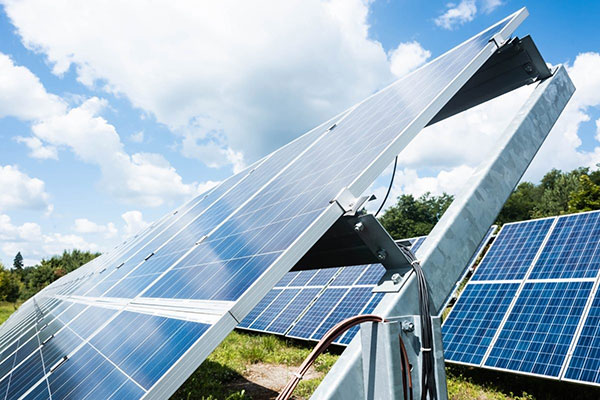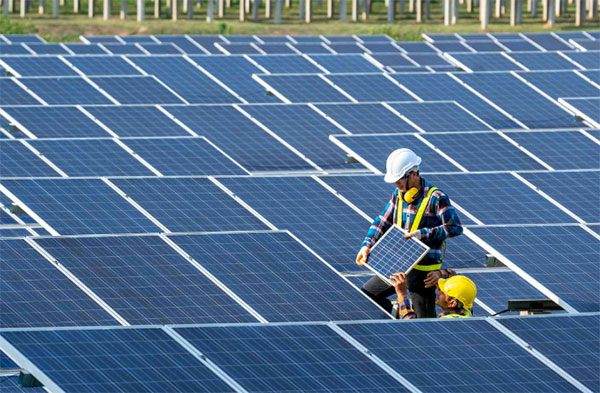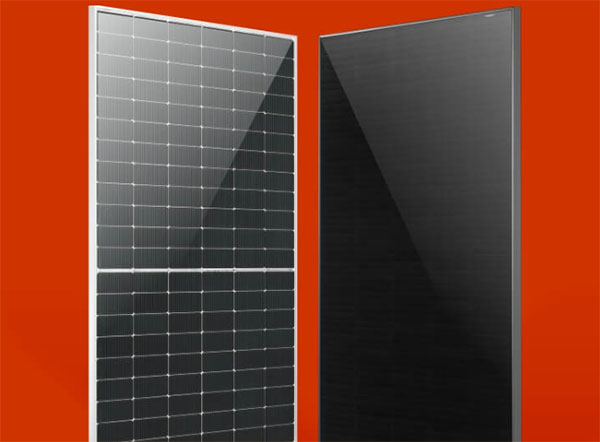Description
Maintenance for polycrystalline solar panels includes:
- Physical Cleaning: Regularly remove dust, debris, and bird droppings.
- Electrical Inspections: Check wiring, monitor voltage and current, and address panel hotspots.
- Mounting Inspection: Ensure sturdy mounts and check for corrosion.
- Performance Monitoring: Monitor power output and update outdated equipment.
- External Protection: Clear snow or ice, address shading, and protect against pests.
- End of Life Planning: Recognize panel degradation and consider recycling or replacement.

Physical Cleaning of the Panels
Ensuring the cleanliness of solar panels is paramount to maintain their efficiency and lifespan. Regular cleaning ensures that the panels capture the maximum amount of sunlight, which translates directly to the energy they produce. Dirty panels can cause a reduction in power generation, leading to increased electricity costs.
Removing Dust and Debris
Dust and debris can accumulate on the surface of the solar panels, especially in areas with a lot of wind or construction. It's recommended to:
- Use a soft brush or a non-abrasive sponge to gently sweep off the dust.
- If the panels are installed at a low angle, it might be necessary to clean them more often due to the slower run-off of water and accumulated debris.
- In areas with higher pollution or pollen, cleaning should be done at least once every two months.
- Remember, a mere 5% coverage of dirt or debris can lead to a power reduction of 20% or more.
Dealing with Bird Droppings and Leaves
Bird droppings and leaves can cause significant shading on the panels, reducing their efficiency. To deal with these:
- Use a hose with a gentle water stream to rinse off bird droppings. If they're stubborn, you might need to use some lukewarm soapy water.
- Ensure that the soaps or cleaning materials used do not have any abrasive substances that can scratch the panels.
- For areas with frequent bird droppings, consider installing bird deterrents around the panels.
- Trim overhanging branches to reduce the accumulation of leaves and prevent potential damage from falling branches.
Safety Precautions during Cleaning
Safety is paramount when cleaning solar panels, especially if they're installed on rooftops:
- Never climb onto a roof without proper safety equipment, including harnesses and slip-resistant shoes.
- It's best to clean the panels during the early morning or late afternoon when they're not hot to avoid the risk of burns and to ensure efficient cleaning.
- If the solar panels are installed high up, consider hiring professionals with the necessary equipment and experience.
- Always turn off the solar panel system before cleaning to avoid any electrical hazards.
Through regular cleaning, you can maintain the
quality and efficiency of your solar panels, ensuring that you get the most value for your investment. Regular checks on power outputs, monitoring any drops in
efficiency, and being proactive in maintenance can result in significant savings on electricity bills over time.

Electrical Inspections
Electrical inspections are a cornerstone in ensuring the optimal performance of solar panels. These inspections not only guarantee the safety of the system but also ensure that you are getting the maximum power output from your solar installation. Regular inspections can pinpoint potential problems before they escalate, saving you on unexpected repair costs.
Checking the Wiring and Connections
The foundation of a solar system lies in its wiring and connections. A minor flaw can cause inefficiencies, leading to reduced power generation. Here's how to inspect them:
- Ensure all connections are tight. Loose connections can lead to reduced power transfer, and in some cases, they can be a fire hazard.
- Regularly inspect wires for signs of wear, tear, or rodent damage. Replace any damaged wires immediately.
- Use a multimeter to test the continuity of the wires. A drop in expected resistance might indicate a potential fault.
- While solar panel systems are designed for longevity, it's advisable to replace all wiring every 20-25 years to ensure top performance.
Monitoring Voltage and Current
Continuously monitoring the voltage and current output can give you insights into the performance of your panels:
- Use a solar monitoring system. Most modern inverters come with monitoring systems that can provide real-time data on the voltage and current.
- Compare the readings with the manufacturer's specified parameters. A significant deviation might indicate a fault or inefficiency in the system.
- If the system's output suddenly drops by more than 10%, it's a sign that there might be an issue that requires immediate attention.
Identifying and Addressing Panel Hotspots
Hotspots are areas on a solar panel that become hotter than their surroundings. This is usually due to shadows cast on the panel, dirt, or a malfunctioning solar cell:
- Use a thermal camera or infrared thermometer to identify these hotspots. Regularly inspect the panels, especially during peak sunlight hours.
- Addressing hotspots is crucial as they can reduce the overall efficiency of the panel and even damage the materials over time.
- Shadows from nearby structures, trees, or even dirt can cause hotspots. Ensure that no objects cast a shadow on the panels, especially during peak sunlight hours.
- If a specific solar cell is malfunctioning and causing the hotspot, it might need to be replaced.
In conclusion, regular electrical inspections ensure the
quality and
efficiency of your solar system. By being proactive and addressing issues as soon as they arise, you can ensure a longer lifespan for your solar panels and avoid potential costs associated with major repairs or replacements.
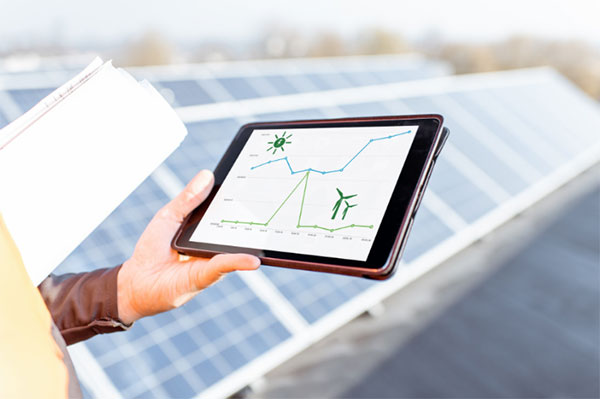
Mounting and Structural Inspection
The stability and orientation of solar panels are paramount to their efficiency and longevity. By ensuring that the mounting system is robust and properly oriented, one can achieve the highest possible energy conversion and prevent potential damage. A well-structured mounting system can help safeguard your investment for years to come.
Ensuring Sturdy Mounts
A strong foundation is crucial to keep the solar panels safe and efficient:
- Regularly check all mounting brackets and bolts. Ensure that they are tightened and show no signs of loosening. A single loose bracket can put undue stress on the entire system.
- For ground-mounted systems, inspect the base structure to ensure it remains well-anchored in the ground. Over time, soil erosion can reduce the stability of the mounting system.
- When installed on roofs, make sure that the mounts are securely anchored to the building's structural supports. Over time, these mounts might weaken, especially under the weight of the panels and under wind loads.
- Periodically, you might need to replace the mounting hardware. Using stainless steel or aluminum can reduce the frequency of replacements due to their resistance to rust and corrosion.
Checking for Corrosion or Damage
Metal components, when exposed to the elements, can suffer from corrosion or damage:
- At least twice a year, thoroughly inspect the mounts for signs of rust or corrosion. Even small spots can quickly spread and weaken the entire structure.
- Pay particular attention to the joints and welds, as these areas are more prone to corrosion.
- If corrosion is identified, consider treating the affected areas with anti-corrosion paint or replace the component if the damage is extensive.
- Apart from corrosion, also check for physical damages like cracks, bends, or any deformities. These can compromise the structural integrity of the mounts.
Adjusting Tilt and Orientation
For maximum power output, the solar panels should be perfectly aligned to the sun:
- The optimal tilt and orientation depend on your geographical location and the time of the year. Periodically adjusting the tilt can increase power output by up to 20%.
- Use tools like solar angle calculators to determine the best angle for your location.
- When adjusting, ensure that no part of the structure or nearby objects casts shadows on the panels.
- Some mounting systems come with automated tracking systems that adjust the panel's angle throughout the day. Regularly inspect the motors and gears of these systems for wear and tear.
In conclusion, the physical mounting and structural orientation of your solar panels play a crucial role in their performance and
lifespan. By ensuring that the mounts are sturdy, free from damage, and optimally oriented, you not only boost the
efficiency but also extend the value of your investment in solar technology. Regular inspections and adjustments can translate to substantial savings over the years.
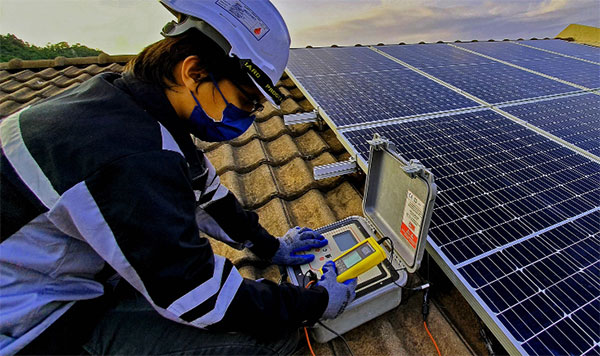
Performance Monitoring and Optimization
Achieving peak performance from your solar panels is not just about installation but continuous monitoring and timely optimizations. Regular performance assessments can help identify areas of improvement, ensuring that the solar system operates at its highest potential, translating to consistent power output and significant cost savings.
Monitoring Power Output
Keeping an eye on how much power your solar system generates is crucial:
- Install a solar monitoring system if your setup doesn't already include one. This will provide real-time data on the power output.
- Regularly compare the energy produced to the expected output based on the system's rated capacity. For instance, a 5 kW system should produce around 20-25 kWh on a sunny day, depending on the location.
- Track daily, monthly, and yearly production. Noting seasonal variations can help in optimizing the system for different times of the year.
- Periodic dips in energy generation, especially on sunny days, could indicate underlying issues that need attention.
Identifying Efficiency Drops
A decline in the efficiency of the solar system can result from various factors:
- Use the monitoring system to set up alerts for sudden drops in efficiency. This can provide immediate notifications, allowing for timely interventions.
- Regularly check for shading issues. Nearby growing trees or new structures can cast shadows on the panels, reducing their output.
- Physical damages, dirt, or hotspots can also lead to efficiency drops. Conduct regular physical inspections to catch and address these issues early on.
- An aged solar panel might not produce energy as efficiently as when it was new. On average, solar panels lose about 0.5% of their efficiency each year. By the 25th year, the efficiency might drop to around 87.5% of the original capacity.
Upgrading Inverters or Other Equipment
As technology advances, newer and more efficient equipment becomes available:
- The inverter, responsible for converting DC from the panels to AC for household use, is a crucial component. Over time, its efficiency might drop, or newer models might offer better conversion rates. Upgrading to a newer inverter can boost the system's overall efficiency.
- Some modern inverters come with advanced features like energy storage, which can be beneficial during peak demand times or power outages.
- Monitoring equipment, connectors, and even mounting structures might have improved versions available. Periodically check the market for upgrades that can boost your system's performance.
- While the initial cost of upgrading might seem high, the long-term benefits in terms of increased power output and efficiency can result in a return on investment in a relatively short time.
To sum it up, maintaining peak performance for a solar system requires constant vigilance. Regular monitoring, identifying inefficiencies, and staying updated with technological advancements are all vital in ensuring you derive maximum value from your solar investment. Investing time and effort in these areas ensures a robust and high-performing system that meets your energy needs consistently.
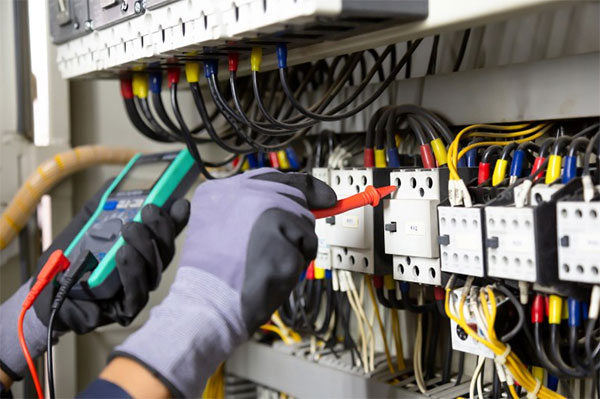
Protection Against External Factors
For solar panels to function at their optimal capacity, it's essential to shield them from external factors that can reduce their efficiency or cause damage. From natural elements like snow and ice to unanticipated issues like shading or pesky critters, having protective measures in place ensures that the system remains robust and efficient throughout its service life.
Snow and Ice Removal
Snow and ice can significantly reduce solar panel efficiency by blocking sunlight:
- For slanted installations, snow typically slides off naturally. However, in cases of heavy snowfall or for flatter installations, manual intervention might be necessary.
- Using a soft roof rake with a long handle can help in safely removing snow from the panels. Always ensure you stand on the ground while clearing the snow to avoid any accidents.
- It's essential to avoid using metal tools or any sharp objects as they can scratch the panel's surface.
- Heated cables, similar to those used in gutter systems, can be installed to melt the snow or ice. These typically consume minimal energy and can be an effective method, especially in areas prone to heavy snowfall.
Addressing Shading Issues
Shading drastically reduces solar panel efficiency:
- Regularly inspect the surroundings of the solar installation for any potential shading objects. This includes growing trees, new structures, or even chimneys.
- Trimming tree branches or repositioning smaller objects can often resolve shading problems.
- For more permanent structures causing shade, you might need to consider reorienting the panels or, in extreme cases, relocating the entire system.
- Using micro-inverters can also help in such situations. Unlike standard inverters that can see a dip in performance due to a shaded panel, micro-inverters ensure that only the shaded panel's performance drops, keeping the rest of the system operating at peak efficiency.
Installing Protective Measures against Animals or Pests
Critters can sometimes cause unforeseen damages:
- Birds, especially in some regions, might choose the space beneath the panels for nesting. Not only can this cause damage, but their droppings can also reduce the panel's efficiency. Bird deterrents or bird spikes can prevent them from settling under the panels.
- Small mammals like squirrels or rodents can chew on the wiring. Consider installing a protective mesh around the perimeter of the solar installation to keep these critters out.
- Some areas might have issues with larger pests, like raccoons or monkeys. In such cases, robust protective measures like fencing or guard wires might be necessary.
Ensuring your solar installation is protected from these external factors is crucial. It not only maintains the
quality of energy production but also extends the
lifespan of the equipment, offering a better return on your investment. Regular inspections, preventive measures, and timely interventions can save significant
costs in repairs and efficiency losses in the long run.
End of Life and Recycling
Solar panels, like any other product, have a finite lifespan. While they can last for several decades, there comes a time when their efficiency declines to a point where replacement becomes more economical than maintenance. Addressing the end-of-life phase responsibly ensures environmental safety and optimal value extraction from the system.
Recognizing Degradation over Time
Over time, solar panels naturally degrade, leading to reduced efficiency:
- On average, solar panels lose about 0.5% of their efficiency each year. This means that after 25 years—a common warranty duration for many panels—a solar panel might operate at around 87.5% of its original capacity.
- Monitoring the system's performance and regularly comparing it to the panel's rated efficiency helps in recognizing degradation.
- Visible damages, like discoloration or delamination, are clear indicators of a panel nearing its end of life.
- Once a panel's efficiency drops below a certain threshold, say 80% of its original capacity, considering replacement might be economically more viable than continuing with degraded performance.
Options for Recycling and Disposal
Proper disposal or recycling is crucial to minimize environmental impact:
- Many components of a solar panel, like the glass, metals, and certain semiconductor materials, are recyclable. Some companies specialize in solar panel recycling and can extract valuable materials for reuse.
- Panels that are not recycled might end up in landfills, which is not environmentally friendly due to potential leaching of harmful materials. Always consider recycling over landfill disposal.
- Check with your solar panel manufacturer or installer. Many have take-back programs or partnerships with recycling facilities.
- For those looking to offset the costs of recycling, selling the old panels to specialized companies might be an option. These firms extract valuable materials like silver from the panels.
Replacement Considerations
When the time comes to replace old panels, several factors should be taken into account:
- New panels offer higher efficiencies and improved technologies. While the initial investment might seem high, the increase in power output and system longevity often justifies the expenditure.
- When replacing, ensure that the new panels are compatible with the existing system components, like inverters and mounting structures. If not, factor in the costs of replacing these components.
- Opt for panels with extended warranties or guarantees on performance. This ensures that the new installation continues to deliver optimal performance for a long time.
- Consider future-proofing the system. As solar technology evolves, having a system that can integrate with future technologies, such as energy storage or smart grid functionalities, can be beneficial.
In conclusion, addressing the end-of-life of solar panels responsibly is paramount for both the environment and the user. Recycling, reusing, and making informed choices about replacements ensure that the transition from old to new is smooth, efficient, and environmentally friendly. As the solar industry grows, the importance of these considerations will only magnify, making it imperative for users to stay informed and act responsibly.






